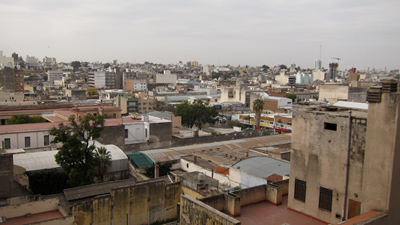
Perhaps to prove I saw more than religious architecture in Córdoba, there are even more photos in this post. Even though it was the middle of winter & the weather didn’t always cooperate, I managed to get a few decent shots. The newest architecture is pretty exciting —with a few notable exceptions— and the best from the past are a number of surviving Neocolonial buildings (pretty much the same period as Art Deco). So in no particular order, here’s the rest from my walks around Córdoba…
Asociación Española de Socorros Mutuos by Luis O. Díaz, 1930. Lovely façade & a couple of tile panels tucked away in the corners. The left panel was rather damaged, so seeing the other one intact was a nice surprise.
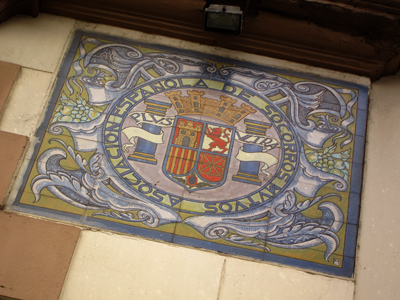
Torre Ecipsa or Edificio Inteligente… keeping an old façade at ground level & building a modern addition inside it.
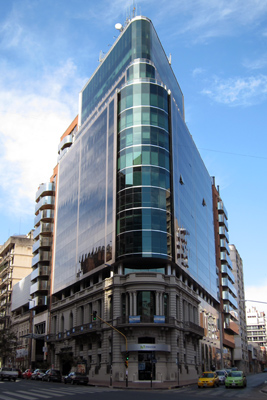
Palacio Ferreyra. Restored in 2007 & reopened as an art museum, this grand mansion designed by Paul Ernest Sanson in 1916 is gorgeous both inside & out. Grand staircases, mosaic floors, & gorgeous plasterwork make a fine compliment to the expertly curated exhibits. Absolutely stunning.
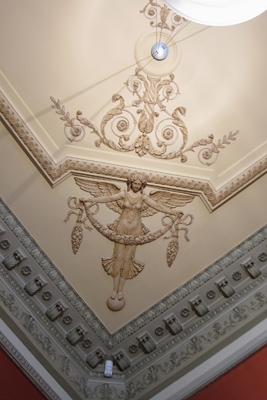
In fact, the entire area around the Palacio Ferreyra was a hub for big mansions & good living. A few are still hanging on but are increasingly in danger as real estate developers offer large sums of money to purchase lots, demolish existing palaces & build high-rises. We heard from a local cordobesa that one owner couldn’t refuse when a developer offered a large, lump-sum payment (using the money to purchase THREE houses elsewhere in Córdoba) + threw in TWO apartments in the high-rise to be built. It’s a dirty game with lots of money at stake… that’s what the architectural heritage of Argentina has to fight against. Enjoy the view while you can.
Parque Sarmiento also borders the Palacio Ferreyra. A gorgeous green space with an amusement park, it also contains the Faro del Bicentenario which is meant to be an icon like the Obelisco in Buenos Aires… which falls short in my opinion. But the rings in the Plaza del Bicentenario are fun in spite of the graffiti.
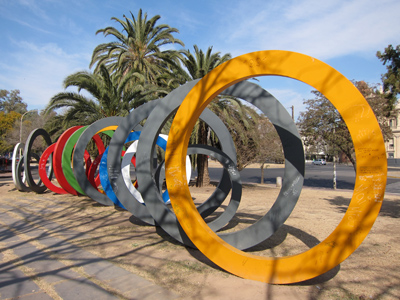
On the other side of town, La Mundial from 1919 claims to be one of the narrowest buildings in the world. I can believe it.
With comparatively few turn-of-the-century buildings surviving in Córdoba, when a dome appears it’s definitely noticed. Most were in questionable condition, but this one still looks nice:
One of the best bits of Art Nouveau in town (Entre Ríos 151-161) by architects Sarmiento & Olmos. Backlit but still beautiful:
Yikes. That’s about all I can say. Brutalism can be very good or very bad… you be the judge. I kinda like the Banco Julio building’s ski-ramp slope though:
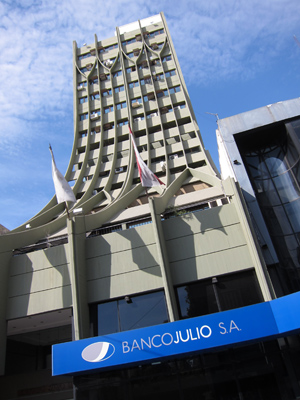
One of my favorite buildings in Córdoba was the Casa de Jubilaciones de la Nación by architects Carlos Navratil & Salvador Bertuzzi, built from 1937-40. Immediately it reminded me of the Banco de Boston in Buenos Aires on Diagonal Norte by English architects Chambers & Thomas. I’d love to do a closer comparison of the details just to see how much influence there was… especially since Navratil & Bertuzzi usually built Racionalista-style structures. The sculptor Octave Schmit placed his name on both columns by the front door. Love the ironwork & the interior honeycomb ceiling!
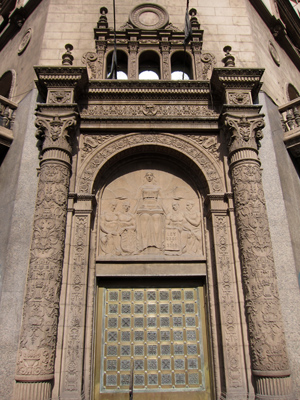
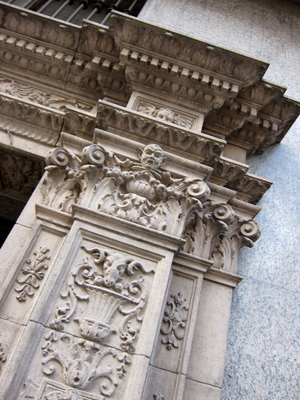
As mentioned previously, most of the pedestrian streets in the city center resemble Once in Buenos Aires… a big mess of commerce with little regard to architectural heritage. Pasaje 9 de Julio & its cúpula are rare gems given the “Once-fication” of the area. So is the Art Nouveau Gran Hotel Victoria, best appreciated before businesses open or on a Sunday.
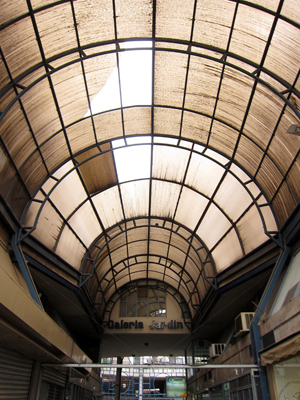
Plaza San Martín, the main square, has some Beaux-Arts buildings to admire:
Banco Hipotecario Nacional… I think by José V. Frugone…
…but the Banco de Córdoba is definitely by Francisco Tamburini. He’s the same architect that put the central arch on the Casa Rosada, among many other projects in Argentina.
Of course, Córdoba has its chinos (mini-markets) just like Buenos Aires:
Not sure what the monkey fountain is all about (Buen Pastor):
Loved this Spanish Revival apartment building, unfortunately unsigned:
The Casa Ismael Galíndez (1890) was transferred to the Banco de la Provincia as collateral for debt in 1901, then absorbed into government property in 1942. It served as the provincial education office until the 1980’s & in 1994 became the Centro de Difusión Cultural.
The Cabildo (town hall) is well-preserved with two interior patios:
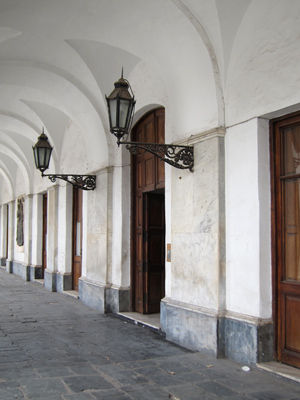
UCR headquarters:
Along with the Casa de Jubilaciones, this tied for my favorite building in Córdoba. Originally the Caja de Ahorros de la Provincia (Provincial Savings Bank), this Spanish Revival gem by Jaime Roca opened in 1929. Today it’s headquarters for the provincial lottery. So practically the same use? 🙂 The detailing is exceptional:
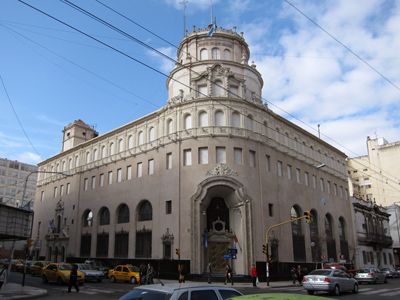
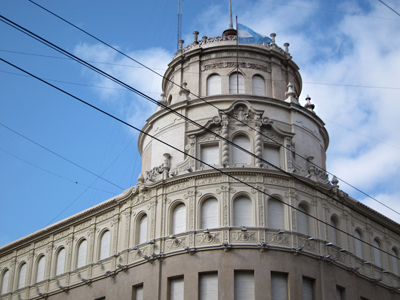
Also by Jaime Roca, the Jockey Club dates from 1946 & contains similar decorative elements as the building above. Unfortunately, modifications to the ground floor really detract from the impact of the building. The second photo is of the balcony just above the blue billboard & the other pics are of the main entrance:
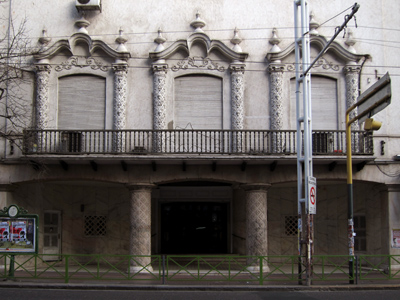
A couple more random shots… the old flour mill is undergoing some kind of recycling/restoration:
Last but not least is the newly-built Centro Cívico del Bicentenario. Everything new in Córdoba seems to have the suffix “del bicentenario” automatically attached to it! Designed by Lucio Morini + GGMPU, the building definitely sets a new trend in local architecture. In theory, I like the design & its accompanying bridge… the location is great as well. With all that open space, it stands out even more. But it seems a bit small & those concrete diamonds are waiting for pigeons… not sure about this one…
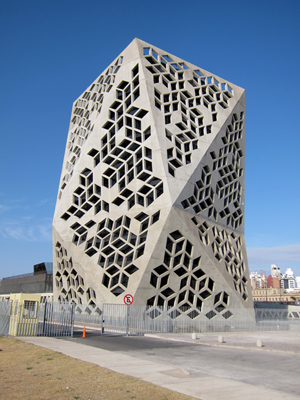
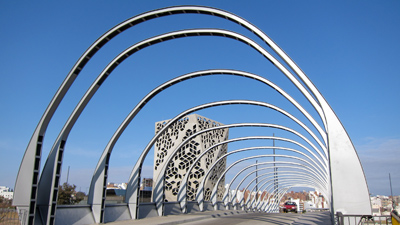
Overall, my stay in Córdoba was lots of fun. I saw some incredible architecture (although there’s more for me to uncover on another trip), had some great meals & even got to check out Córdoba’s first Starbucks. Yep, they’ve moved beyond Buenos Aires. Looking forward to going back!
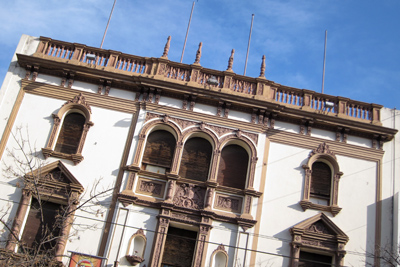
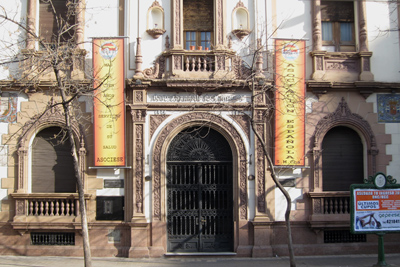
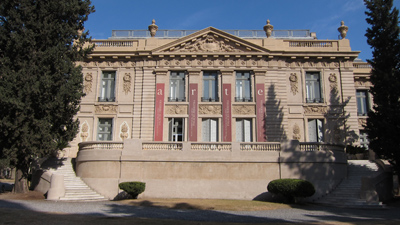
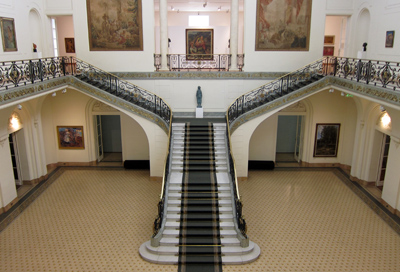
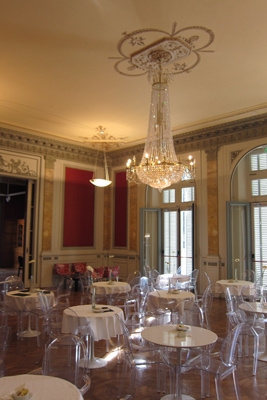
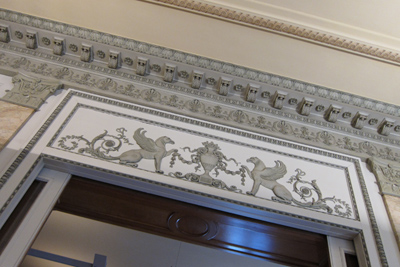
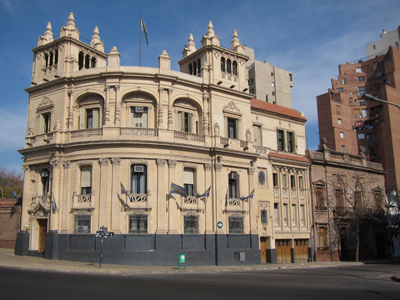
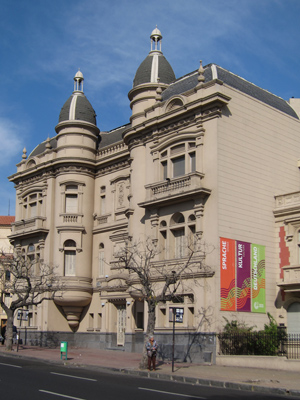
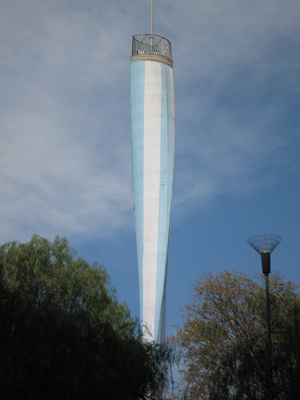
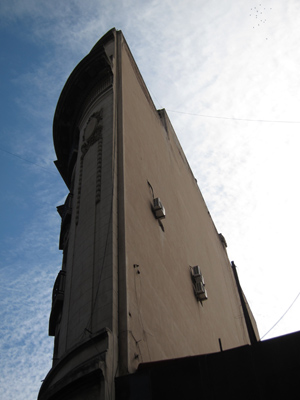
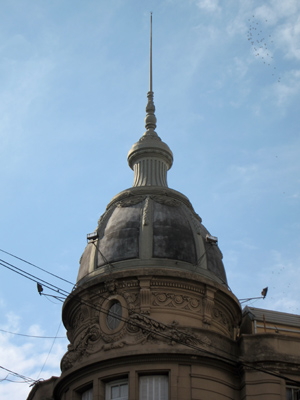
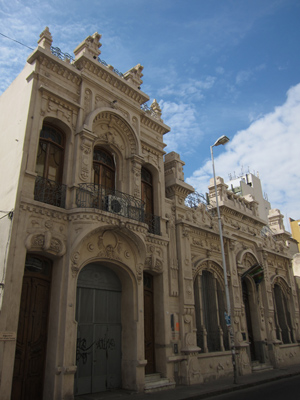
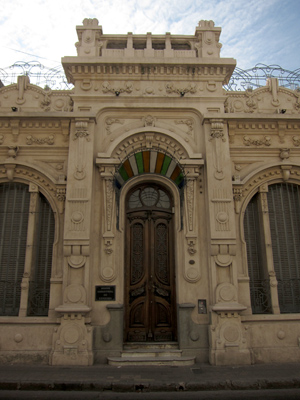


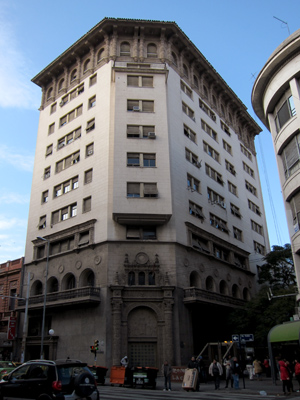
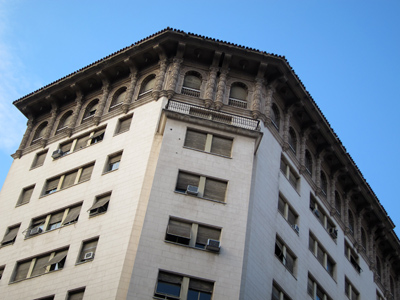
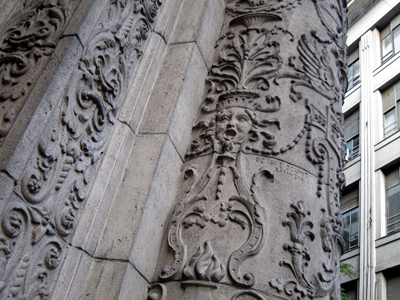


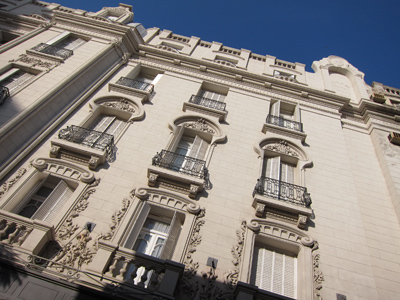
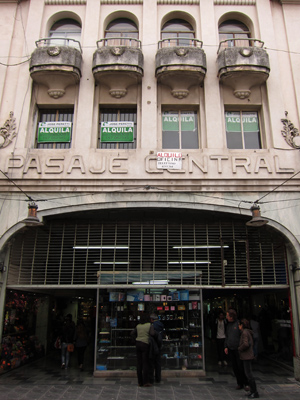
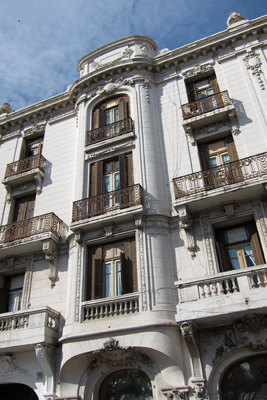
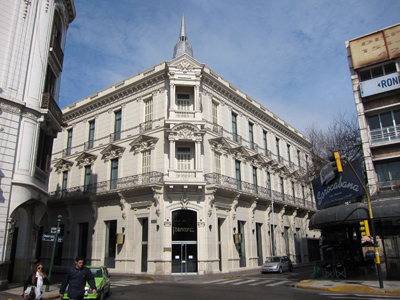
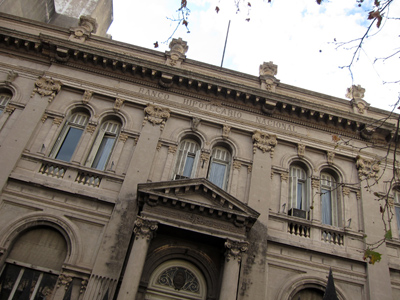
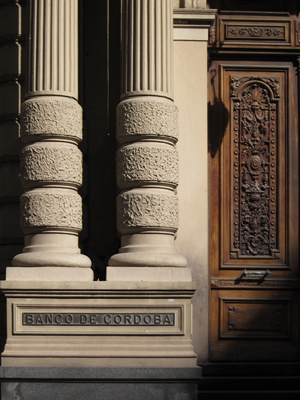
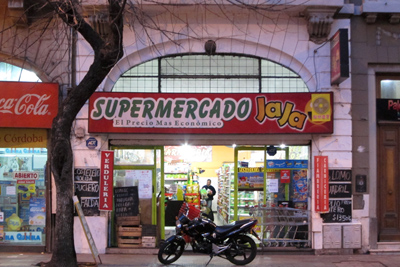
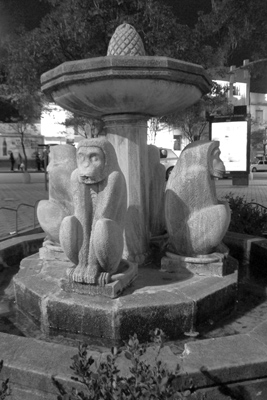
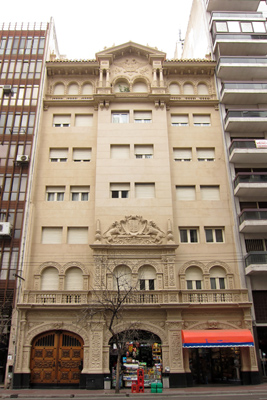
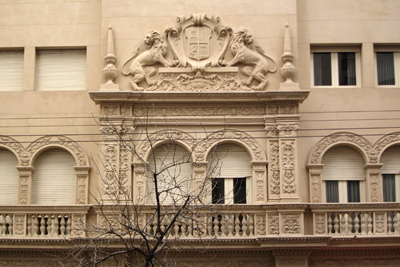
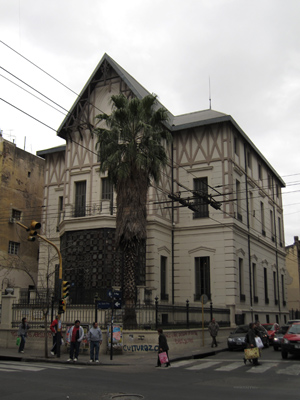
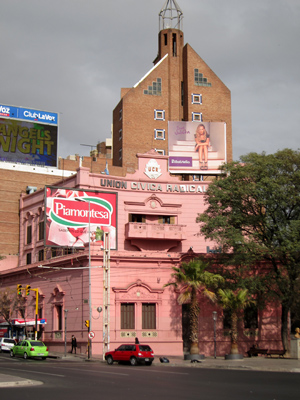
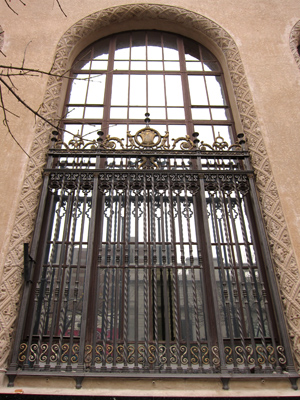
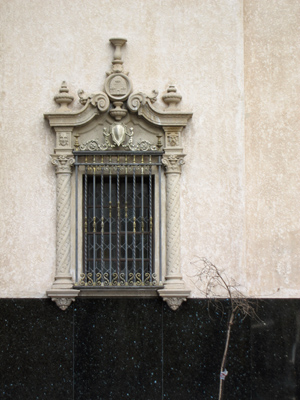
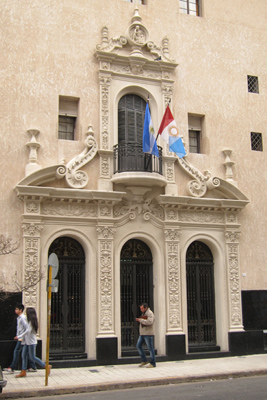

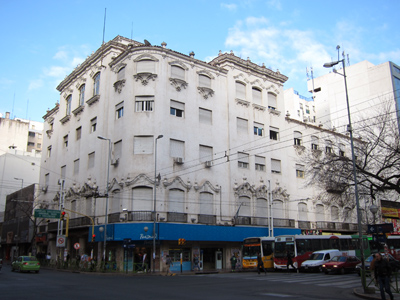
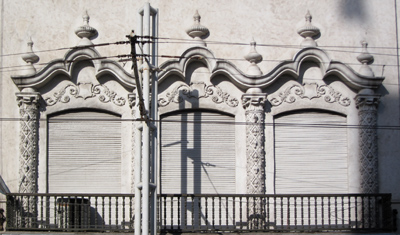
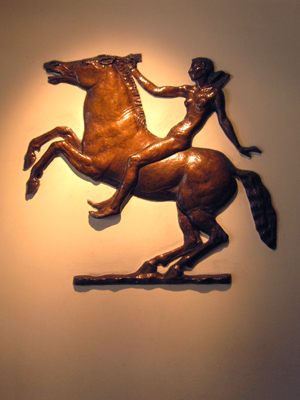
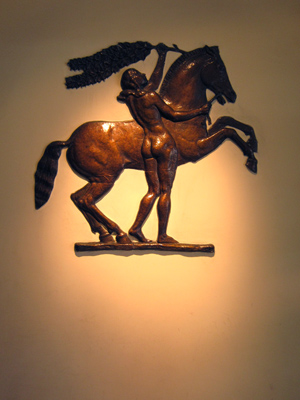
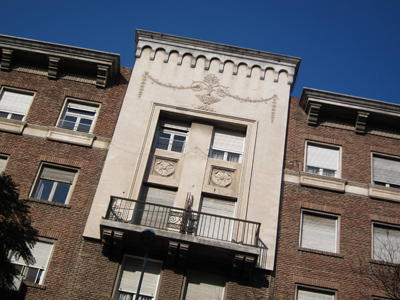
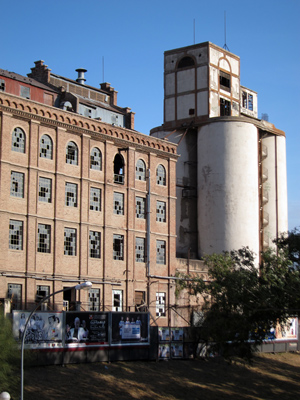
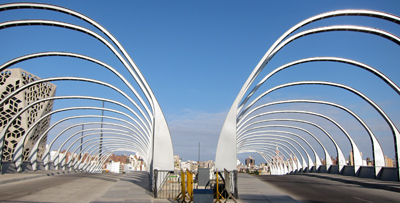
Stunning photos, Robert!!
The Caja de Jubilaciones Building does have an air to the BankBoston building in Florida!
(as a side note, I once heard someone say that the Radicals are more willing to shatter blood to take THAT pink house that the one in Balcarce 50. I’d say “lol”, but in the end it’s not that funny, is it?
Thanks! For the Casa de Jubilaciones, I really need to see if anything was indeed copied from the Banco de Boston or if it’s just in a similar style. Too many projects, so little time.
I saw ex-Radical Lilita Carrió today on Avenida Santa Fe… I wanted to ask her when she planned on doing something serious about presenting a united front against Cristina. But I was nice & didn’t 🙂
Pingback: Daily URL - September 11th - Baexpats - Community of Expatriates in Buenos Aires, Argentina
Torre Ecipsa is my very favourite in all Cordoba! It really seems that the old structure is supporting the new one. A perfect integration, not like some other examples that we see today.
I have my syster living in Cordoba and she tells me that los cordobeses really hate the Bicentenario tower and centro civico, not only because they are ugly but also because they represent the misuse of public funds.
Saludos
The faro is ridiculous, no? I really liked the Buen Pastor area & the Palacio Ferreyra, but the Centro Cívico is… well… interesting 🙂 I walked a lot but didn’t see everything. Looking forward to another trip to Córdoba! Saludos!
hello, there are another buildings amazing in Cordoba:
Palacio de Justicia, Cathedral of Cordoba, Compania de Jesus, Iglesia Los Capucchinos, Estancias Jesuiticas, ……
Hello Juan – I agree… por eso dividí el post en dos tipos de arquitectura: cívica y religiosa. Saludos!
I have a question about Torre Ecipsa. Are they make a new foundation for that addition?
Is the new construction separated or integrated with old building ?
greeting from Serbia!
Hello Toni from Serbia! Since I live in Buenos Aires & I did not have an opportunity to go inside the Torre Ecipsa, I cannot answer for certain. But usually in Argentina on similar buildings, they only save the façade/outer wall as decoration. It usually is not integrated with the old building. I’m sure the foundation is new, placed inside the old building. Hope that helps! Saludos!
excelentes fotos y recorrida, faltan los edificion jesuiticos, catedral, inglesia compania de jesus, etc
Hola Valeria – Gracias por el comentario. La arquitectura religiosa figura en otro post: https://endlessmile.com/argentina-cordoba-religious-architecture/ Saludos!
Hello there, I’m from Córdoba and would like to ask if happened to get near the Faro del Bicentenario. Does it really seem that small? Personally, I think is isn’t small.
Regards
Hola Marce – I didn’t say it was small… maybe you misunderstood when I said it “fell short”. Es una forma de decir: parece que quería ser tan monumental como el Obelisco en BsAs pero para mi no tiene tanto impacto. Thanks for the comment! Saludos!